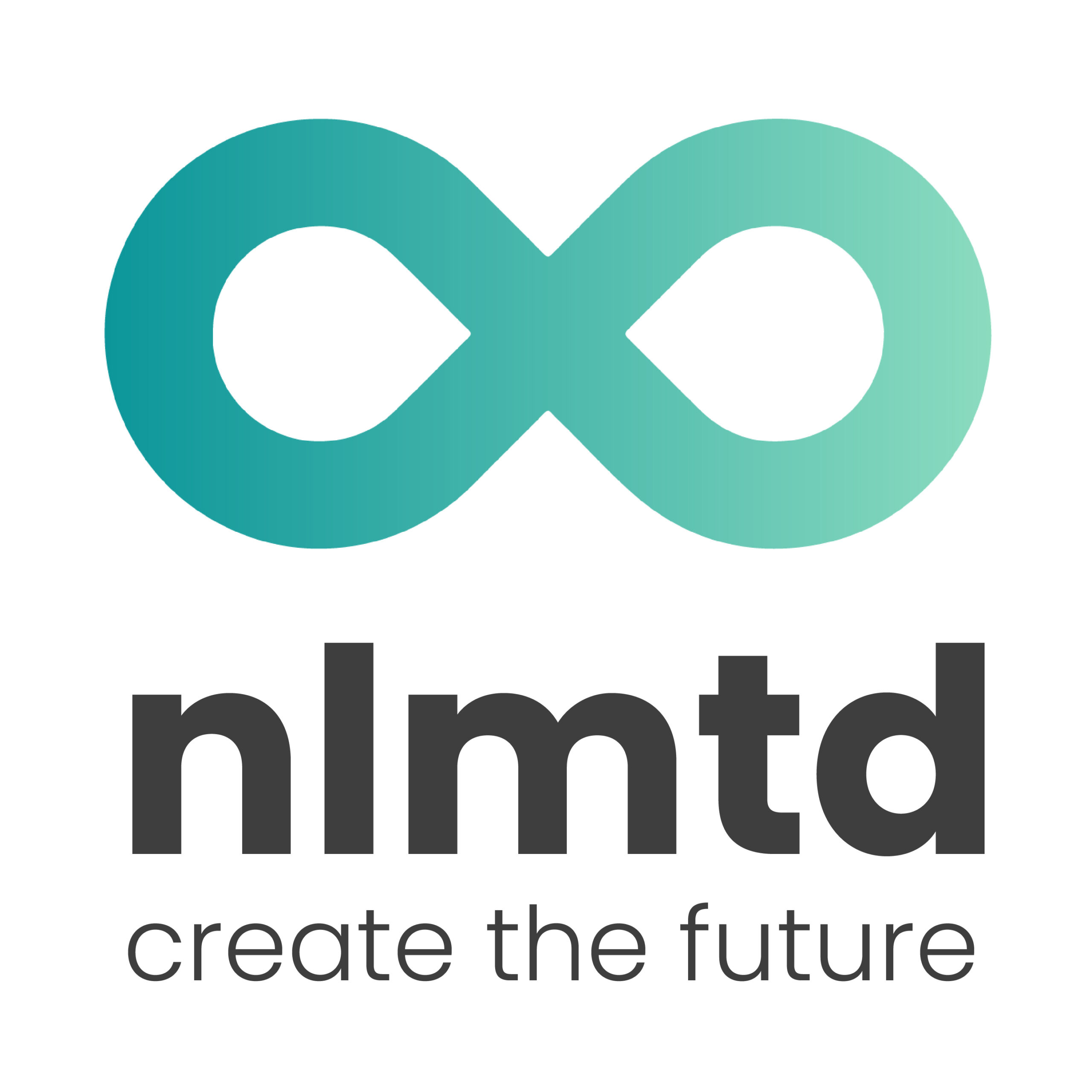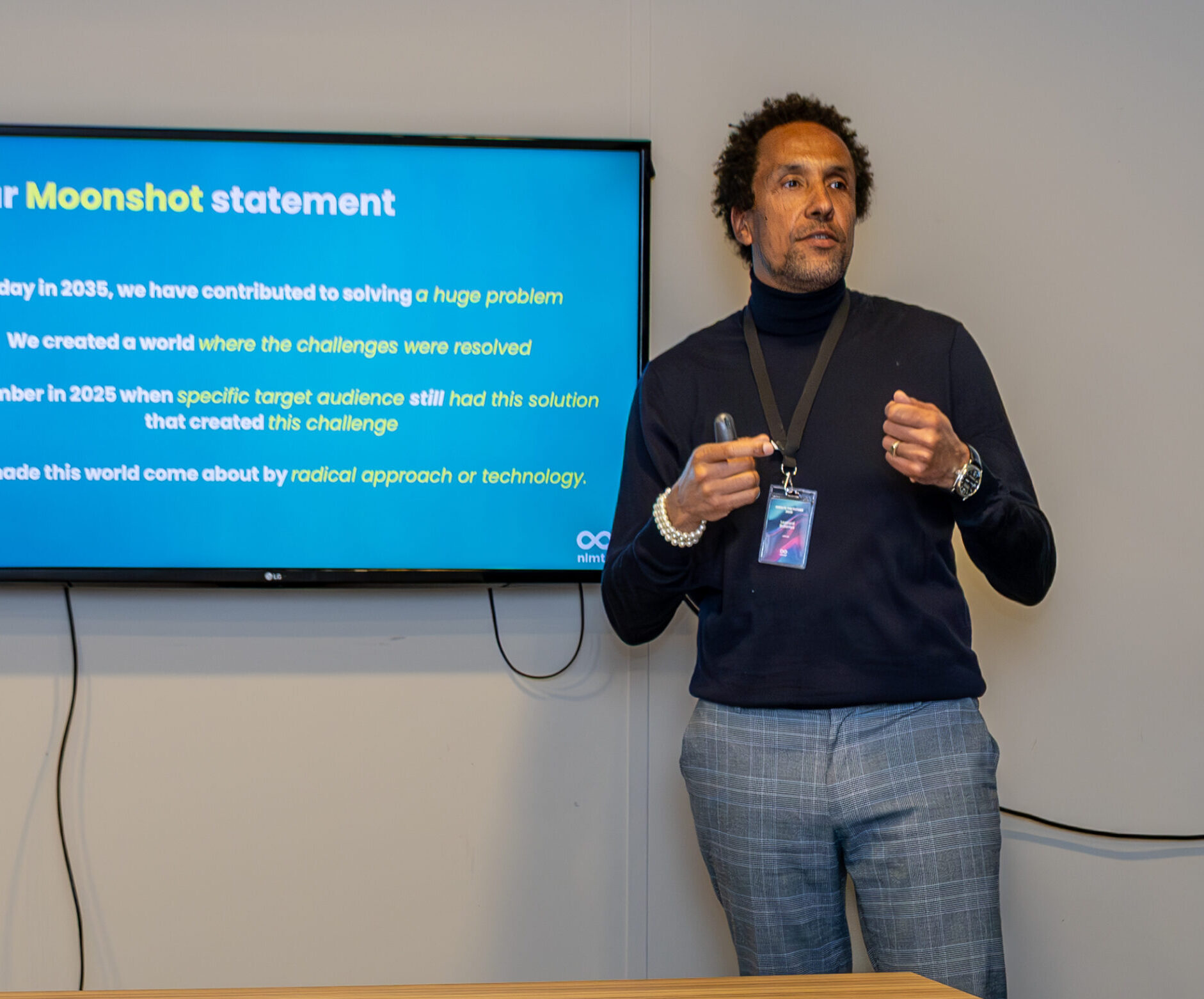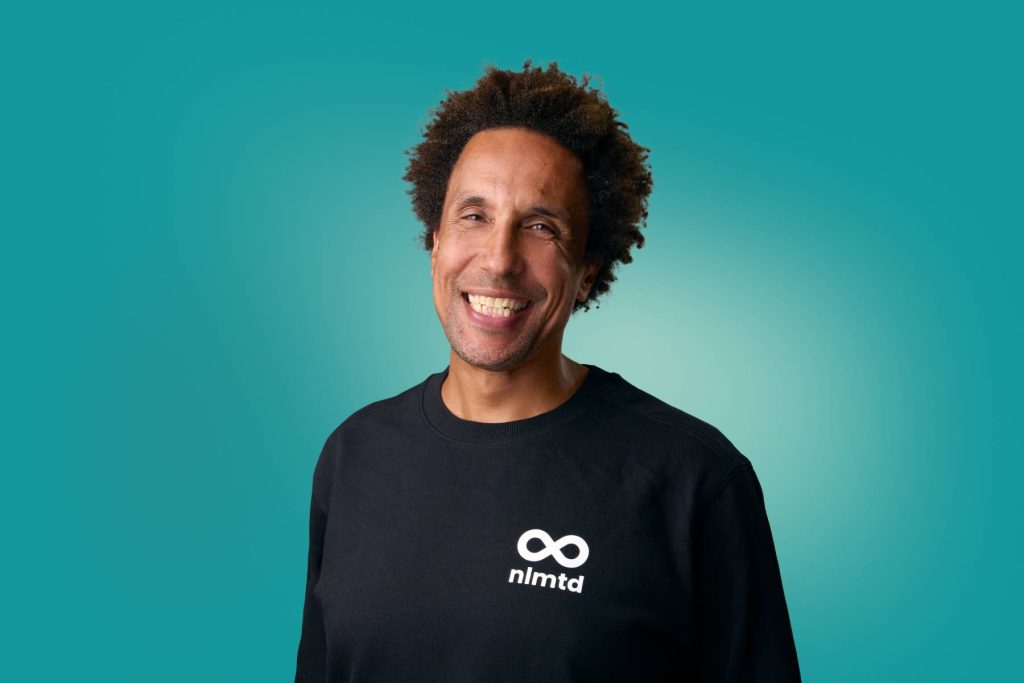
Leonard Bukenya
Director of Innovation
Leonard is a passionate business creative with considerable commercial experience and a strong emphasis on innovation, marketing, and business development. Throughout his career, he has founded new businesses and has successfully established and led business development and innovation initiatives within several large organizations.
Share this article
During Create the Future 2025, over twenty participants explored potential answers regarding the future of the energy transition. Instead of simply analyzing scenarios, we focused on envisioning what the world might look like in 2035. We achieved this through Moonshot Thinking, a method that blends ambition and imagination with action and impact.
Why Moonshot Thinking?
The session began with a powerful quote from *The Alchemist*: “When you truly want something, the entire universe conspires to help you achieve it.” This is not just poetry; it serves as a starting point for further exploration. As soon as you define a clear and ambitious goal, action begins to unfold. I experienced this firsthand during my personal quest to find a kidney donor for my father. This challenge ultimately led to a campaign that helped us recruit 20,000 new donors. Since that experience, I’ve learned that combining big thinking with a concrete goal can truly make a difference.
The Power of Moonshot Thinking
Moonshot thinking is more than just dreaming; it is an action-oriented mindset. It challenges the conventional question of “What fits within the existing system?” and instead asks, “What kind of system is needed to achieve what truly matters?” This shift in perspective creates room for new ideas and drives action. As a result, along with insights from other sessions, a compelling vision for the future has emerged, calling for decisive action.
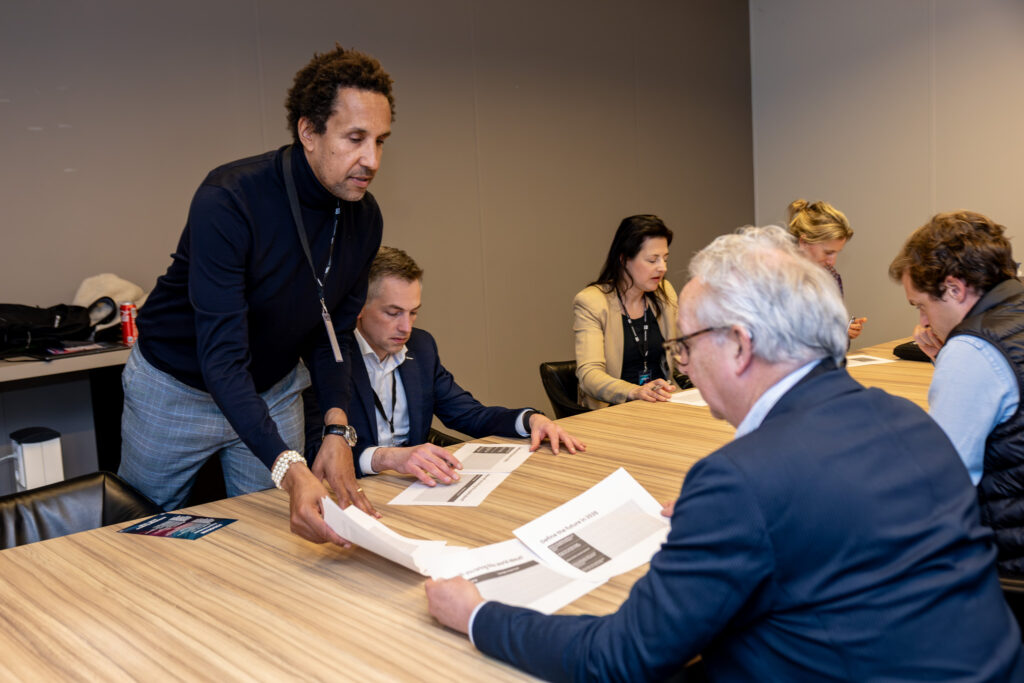
What if we think from 2035?
Using five focused questions, participants created their own Moonshot: a tangible vision of the future where they can make a difference.
- What major problem do you aim to solve?
- For whom are you doing this?
- What is their current behavior or solution?
- What holds them back from making a change?
- And what changes have occurred by 2035 as a result of your actions?
The responses led to detailed sketches of future visions—personal Moonshots —that collectively create an optimistic and realistic image of a regenerative, inclusive, and just future. It was remarkable how united the participants were in their views: “We do not lack solutions, but rather the courage to connect them.”
Moonshots in and beyond the energy transition
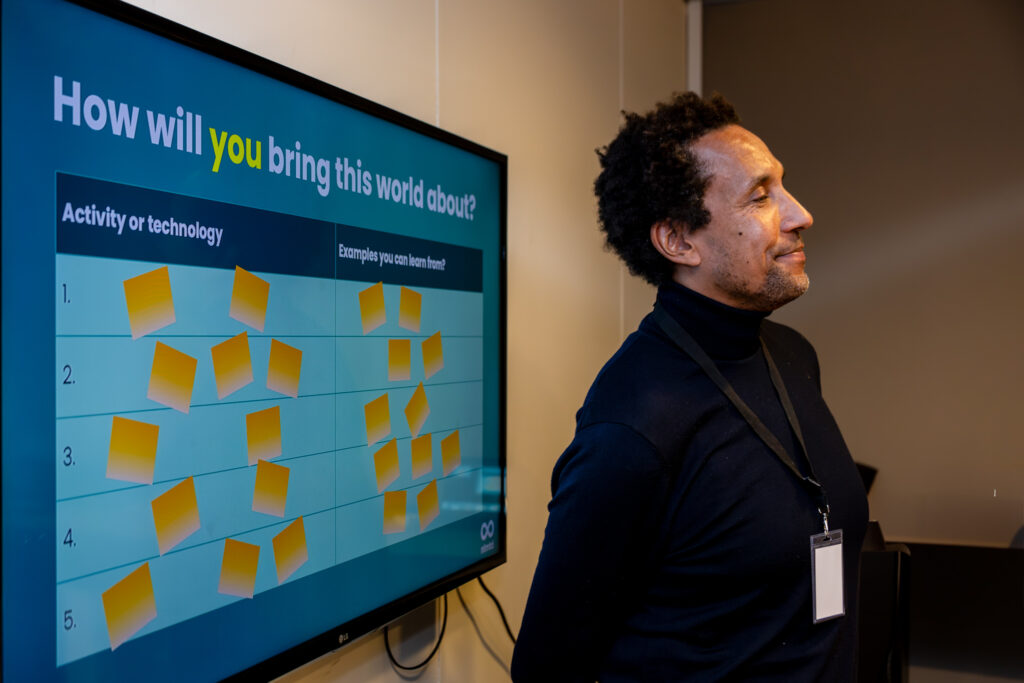
The shared ideas addressed both the energy transition and broader systemic issues, making them particularly impactful.
Moonshots around energy
- From Consumer to Prosumer
People are increasingly interested in contributing to their own energy supply through cooperatives, local grids, and solar panels. Energy should be fair and participatory. - Smart, Responsive Networks
The necessary technology is already available. The challenge lies in connecting, scaling, and collaborating within ecosystems. - Energy as a Human Right
Access to clean and reliable energy should not be determined by income or location. As Jasper Eijmers states, “Everyone deserves access to a warm home and clean energy, regardless of where they live or what they earn.”
Broad Moonshots with impact on energy
- The City as a Space for Peace and Encounter
Imagine a city that encourages us to slow down, leading to less stress, reduced mobility, and lower energy consumption. - Trust as a Technological Accelerator
Innovation often encounters obstacles not due to a lack of technology, but because of distrust. When there is transparency and a sense of ownership, the impact of innovation is greatly accelerated. - From Power to Multiple Values
People desire not only to be heard but also to actively co-create. This calls for more local ownership and less centralization.
It's not just future talk
The session clarified that many existing solutions are available. It’s time to connect, scale, and take the leap. We shared some inspiring examples.
- Energie Van Ons – where residents co-own their energy grid.
- Joyful City – a concept that redesigns cities around peace and meaning.
- Those Vegan Cowboys – pioneers in the protein transition, with scalable impact.
From thinking to doing: first steps
Several participants chose to take immediate action. Their ambitious goals, referred to as “Moonshots,” include:
- Energy for Everyone – Jasper Eijmers
“By 2035, every home will be self-sufficient and integrated into a shared system.”
The first step is to organize a neighborhood meeting focused on local energy initiatives. - Fair Food – Annemarie Geerdes
“By 2035, animal feed will be sustainable, environmentally friendly, and intelligently designed.”
The first step is to test different feed sources and assess their impact. - The City as a Game – Saskia de Nie
“By 2035, we will evaluate cities based on factors such as peace, play, and purpose.”
First step is to create a “joy spot,” a space for connection, free from consumption.
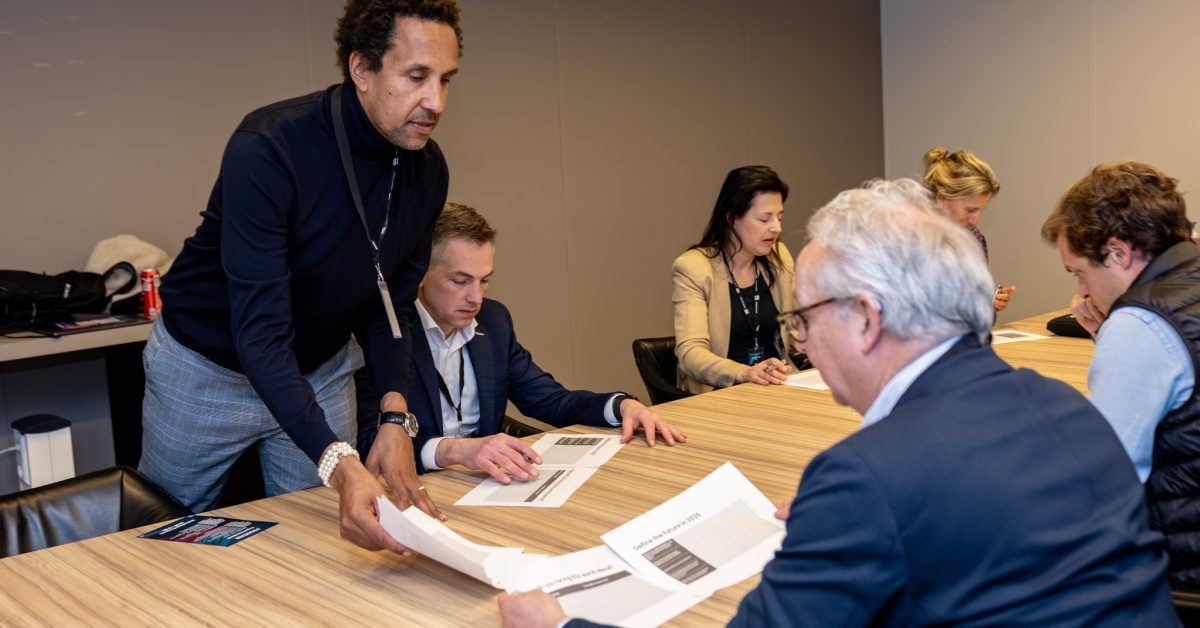
What if it does work?
Moonshot Thinking impacts people at all levels. During the session, we witnessed how ideas moved beyond sticky notes to become integral to personal and professional aspirations. Organizations identified their role within the larger system, while individuals uncovered their own Moonshots.
For instance, following this session, I am now collaborating with a CEO on his personal Moonshot and that of his son. Two generations, two dreams, one shared journey.
And you?
Moonshots aren’t just for leaders or policymakers; they’re for everyone who wonders, ‘What if it works?’ Start small, think big, learn drastically, utilize existing resources, and be willing to learn from challenges.
